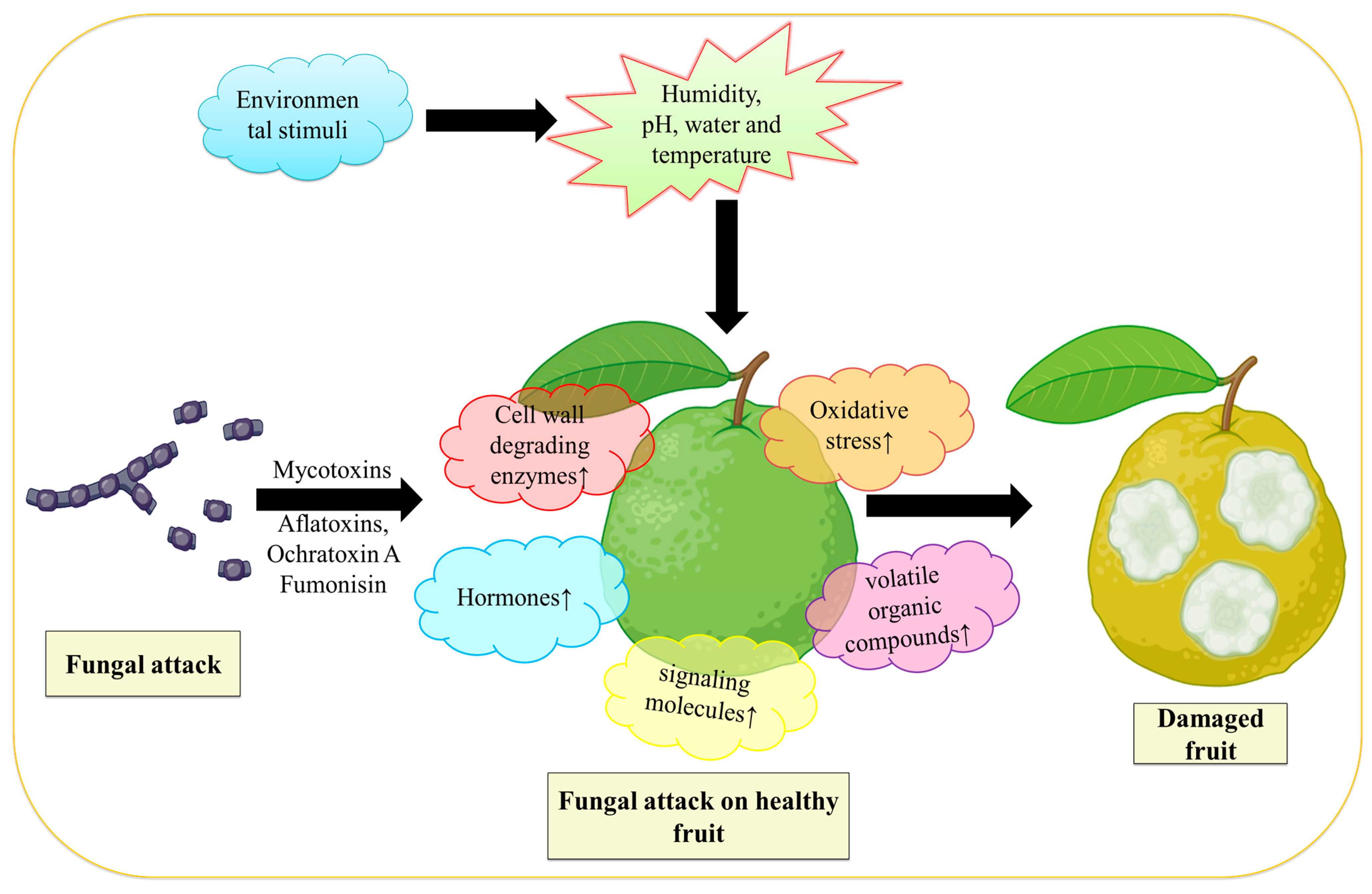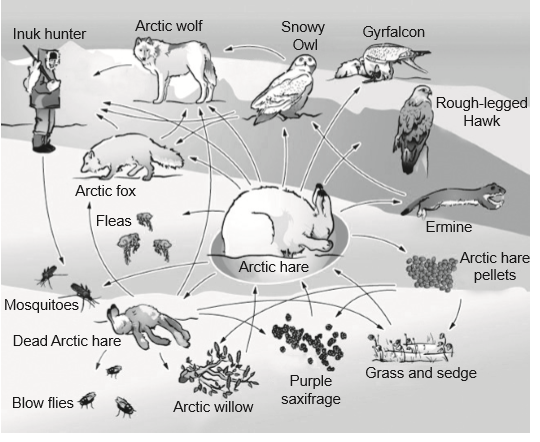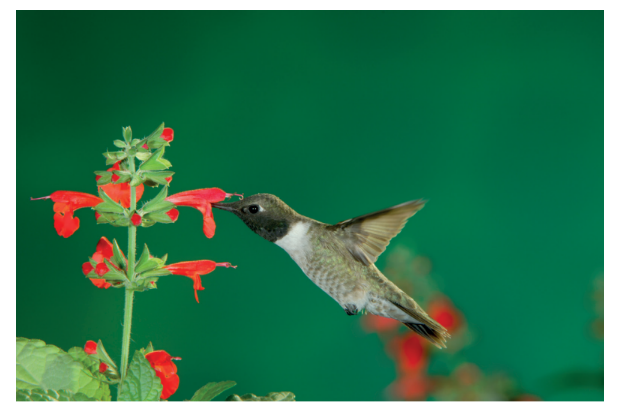IB Biology HL (HIGHER level)- 2024 – Practice Questions- All Topics
Topic 4.1 Species, communities and ecosystems
Topic 4 Weightage : 8%
All Questions for Topic 4.1 – Species, Ecology Terms, Modes of Nutrition, Autotrophs, Heterotrophs, Nutrient Cycling, Mesocosms , Chi Squared Test, Types of Metabolism, Species Interactions, Niches, Chi Squared Table
Question
Which organism would be classified as a saprotroph?
A single-celled eukaryote that obtains its carbon compounds by photosynthesis and ingestion of other single-celled organisms
A jellyfish that uses the stinging cells in its tentacles to paralyse its prey, which is passed to an internal gastric cavity through a single opening
A fungus that feeds by secretion of digestive enzymes onto its food and absorption of digested material
A dung beetle that feeds on the fecal material left behind by other animals
▶️Answer/Explanation
Ans: C

Endocytosis is the process by which cells absorb molecules by engulfing them. The cell membrane folds inward to form a small pocket, which then pinches off to form a vesicle containing the ingested material.
Examples of saprotrophs include fungi, bacteria, and some types of insects. These organisms play a crucial role in the ecosystem by breaking down dead organic matter and returning nutrients to the soil.
The image shows a transect through a stream and a field.

Which calculation would test for the association between two species of plants from quadrat data from section A and section B of the field?
A. Correlation coefficient
B. Random numbers sampling
C. Standard deviation
D. Chi-squared
▶️Answer/Explanation
Markscheme
D
Chi squared is used to test hypotheses about the association between two categorical variables. The test calculates a chi-squared statistic, which is then compared to a critical value to determine whether the difference between the expected and observed frequencies is statistically significant. The chi-squared test is commonly used in scientific research to analyze data from experiments and surveys, and it is an important tool for testing hypotheses about the relationships between different variables.
Which are characteristics of a species?
I. The potential to interbreed to produce fertile offspring
II. The formation of a population with members of the same species within a community
III. The overproduction of offspring
A. I and II only
B. I and III only
C. II and III only
D. I, II and III
▶️Answer/Explanation
Markscheme
A
The potential to interbreed to produce fertile offspring and the formation of a population with members of the same species within a community are considered as the characteristics of a species because they define the boundaries of a particular group of organisms. A species is defined as a group of organisms that can interbreed to produce fertile offspring. This means that individuals of the same species are able to mate and produce offspring that are also able to reproduce. The ability to interbreed is what separates one species from another, and it is what defines the boundaries of a particular group of organisms. In addition, the formation of a population with members of the same species within a community is also a characteristic of a species. A population is a group of individuals of the same species that live in the same area and are able to interbreed. The formation of a population with members of the same species within a community is important because it allows for the exchange of genes and the maintenance of genetic diversity within the species. Together, these characteristics define what a species is and help us to understand the diversity of life on Earth.
The image shows an Arctic food web.

What is the role of the Arctic hare?
A. Detritivore
B. Primary consumer
C. Secondary consumer
D. Saprotroph
▶️Answer/Explanation
Markscheme
B
Primary consumers are organisms that consume autotrophs, or producers, as their primary source of food. They are also known as herbivores. Primary consumers are typically animals that eat plants, algae, or other autotrophic organisms. Examples of primary consumers include rabbits, deer, cows, and many species of insects. Primary consumers are important because they help to transfer energy from the producers to the rest of the food chain. They are the first level of consumers in the food chain, and they are an important food source for higher-level consumers, such as predators.
Hare, Arctic hare is feeding mainly on producers (grass, purple saxifrage and arctic willow) & fulfilling most the qualities of primary consumer of given food web.
Two populations of the same fish species were fed different diets to investigate the effect of differing nutrition on their growth. What is an appropriate method to determine the significance of a resulting difference?
A. Calculate the mean for each population
B. Calculate the standard deviation for each population
C. Graph the results
D. Perform a t-test
▶️Answer/Explanation
Markscheme
D
A t-test is a statistical test used to determine whether there is a significant difference between the means of two groups. It is used when the data are normally distributed and the variances of the two groups are approximately equal. The t-test compares the means of the two groups and calculates a t-value, which is then compared to a critical value to determine whether the difference between the means is statistically significant. The t-test is commonly used in scientific research to compare the means of two groups and to test hypotheses about the differences between them.
Question
A hummingbird is shown visiting a large flower.

What makes this a mutualistic relationship?
A. The bird feeds on nectar and transfers pollen to the stamen of a flower of the same species.
B. The bird obtains nutrients and the plant is assisted with pollination for sexual reproduction.
C. The bird requires pollen as a protein source and, while obtaining this, disperses seeds for the plant.
D. The bird transfers pollen to the stigma of flowers of a different species while feeding.
▶️Answer/Explanation
Ans:B
This is an example of mutualism, a type of symbiotic relationship where both organisms benefit from the interaction. In this case, the bird obtains nutrients from the plant, while the plant is assisted with pollination for sexual reproduction. The bird benefits by obtaining a source of food, while the plant benefits by having its pollen spread to other plants, which increases the chances of successful pollination and reproduction. The bird is attracted to the plant because of the nectar it produces, and in the process of feeding on the nectar, it brushes against the plant’s reproductive structures, picking up pollen. When the bird visits another plant of the same species, it transfers the pollen to the plant’s reproductive structures, which results in fertilization and the production of seeds. This mutualistic relationship is beneficial to both the bird and the plant, and it is an important example of how different organisms can interact in complex and beneficial ways in nature.
